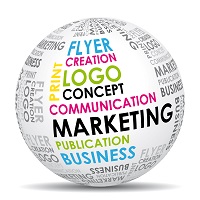 Marketing Agencies have an incredibly difficult job. They are tasked with creating logos, slogans, and campaigns that will instantly grab the attention of the consumer, hold it, and allow them then to pitch their clients’ wares ultimately concluding in a sale or greater brand recognition.
Marketing Agencies have an incredibly difficult job. They are tasked with creating logos, slogans, and campaigns that will instantly grab the attention of the consumer, hold it, and allow them then to pitch their clients’ wares ultimately concluding in a sale or greater brand recognition.
However, many marketers are unaware of the need to insure that their creativity does not run afoul of another’s intellectual property rights prior to pitching an idea to a client. Think about it. You create and design a campaign for an athletic sportswear company to propel them into the next level. Something simple. Something direct. Something that will capture the imagination of consumers in one phrase: Just Get it Done.
The client loves the pitch. They green light the entire campaign. Billboards are ordered. Point-of-sale displays readied. Sports stars engaged and the commercials filmed. The campaign launches and people love it. Sales skyrocket. A job well done.
A week later, as you are still enjoying your success, the mail comes. There is a simple letter addressed to you from a rival shoe company of your client. You think, “Wow, they want to hire us too.” You open the letter and read it. They intend to sue you and your client unless the ad campaign is pulled as they feel it infringes upon their long-standing and similar concept, Just Do It Now. How could this have happened? More importantly, how could it have been avoided?
Many marketing agencies are unaware of the pitfalls that can be encountered when creating a new campaign for a client. Moreover, who should bear the responsibility if infringement occurs? The purpose of this paper is to provide a simple overview of the various forms of intellectual property protection advertising agencies should be aware of and simple issues to assist both protecting your clients’ intellectual property and avoiding disputes surrounding the same.
Types of Intellectual Property Protection Applicable to Advertising Campaigns
- Trademark(s): Trademarks are used to identify the source of the goods or services. For advertising agencies, trademarks usually protect brand names, slogans, and tag lines created for their clients. In specific instances trademarks can even protect unique package designs.
- Copyright(s): Copyrights protect the original works of artistic expression themselves. Artistic logos and songs or jingles associated with a new campaign may be protected under copyright law.
4 Steps to Protect You and Your Clients’ Rights
- Client Agreement: First and foremost, make sure your client agreement includes two key elements: (A) a work-for-hire agreement and (B) an indemnification clause. In regard to the former, under U.S. Copyright Law your client will not be able to claim ownership of any work that may be protected as a copyright created by a third-party advertising agency unless they retain a written and signed work-for-hire agreement transferring to them rights in the works created by your agency under the client agreement. Also, make sure that your agreement identifies who will bear the risk of loss should your work be determined to infringe upon another’s rights. This risk may be passed along to the client by and through a standard indemnification clause. Whether or not your client will agree to the same is a different issue. At a minimum, however, it should be considered in every client agreement with an advertising agency.
- Trademark Clearance: Once you have developed your concepts, brands, slogans, and logos you should conduct research or establish a relationship with a company to research your proposed concepts quickly and efficiently to make sure that they will not infringe upon another’s rights prior to pitching the concepts to your client. Properly formed, a relationship with a professional trademark search company can provide you with the peace of mind that your work for your client will not run afoul of another’s rights subjecting your client, and possibly you as well, to claims of infringement or contributory infringement.
- Register the Trademark(s): Once the brands, slogans, and logos are approved by the client, immediately apply to register them with the U.S. Patent and Trademark Office. Again, this can be within your company or by and through a company that specializes in the same. Whatever the case, applying to register the trademarks with the U.S. Patent and Trademark Office, even if not in use, creates rights in those brands, slogans, and logos as of the date of the application. As priority of use (i.e., first to use or file often secures the rights to the trademark) is a critical, applying for the trademark(s) as soon as possible is always advisable.
- Register Your Copyright(s): Likewise, works that may be protected under U.S. Copyright Law should also be applied for and registered with the U.S. Copyright Office as soon as possible. Registered federal copyrights are invaluable in protecting against the infringement of the same and should be secured as soon as the work is placed into a tangible form.
About The Trademark Company
The Trademark Company is a customer-focused law firm limiting its practice to the federal protection of our client’s trademarks and copyrights. To learn more about The Trademark Company visit us online at www.TheTrademarkCompany.com or contact us at info@TheTrademarkCompany.com or (800) 906-8626.
Copyright 2014 The Trademark Company
